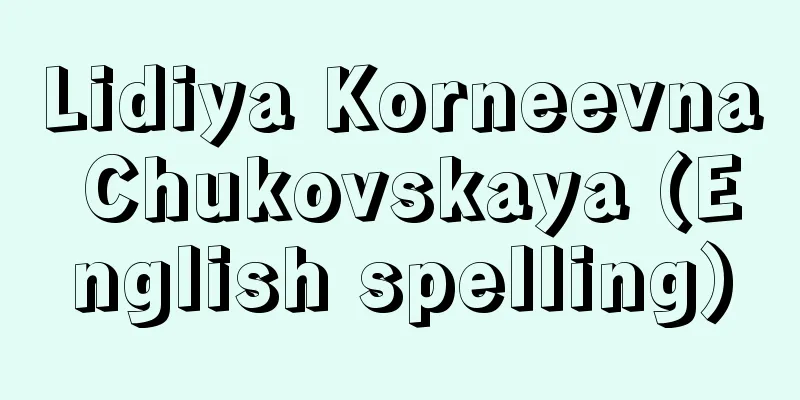Toyohiko Kagawa

|
Christian social activist. Born in Kobe on July 10, 1888. Lost both parents during his childhood. Baptized in his fourth year at Tokushima Junior High School. After completing two years of preparatory theology at Meiji Gakuin Senior High School, he transferred to Kobe Theological Seminary, graduating in 1911 (Meiji 44). He engaged in evangelism while still a student, and from 1909, at the age of 21, he lived in a slum in Fukiai, Kobe, where he worked to relieve the poor with his wife Haru (1888-1982, married in 1913). In 1914 (Taisho 3), he studied abroad at Princeton University and Princeton Theological Seminary. During his stay in the United States, he witnessed a workers' demonstration in New York, and also led a tenant farmers' union movement as secretary in Utah, which made him keenly aware of the need for activism. Returning to Japan in 1917, he once again settled in the slums of Fukiai, remaining there until he moved to Tokyo in 1923 to provide relief after the Great Kanto Earthquake. Immediately after his return, he became involved in the activities of the Kobe City Federation of Friendship Associations, and in 1919, together with Suzuki Bunji and others, he formed the Kansai Labor Alliance of Friendship Associations. In 1921, he led a major strike at the Kawasaki and Mitsubishi shipyards in Kobe, for which he was imprisoned. After the defeat in the strike, criticism of Kagawa's legalistic and non-violent stance intensified, and he retired from the front lines of the labor movement, but in 1922, he formed the Japan Farmers' Union with Sugiyama Motojiro and others. He went on to become an executive committee member of the Political Research Association in 1924, and a central committee member of the Labor and Farmers Party in 1926, but withdrew from the proletarian party movement after the party split. Meanwhile, his autobiographical novel Beyond the Line of Death, published in 1920, became a huge bestseller, and his other works, coupled with his missionary work, were widely read. Kagawa opened the Rural Gospel School to evangelize farmers, and also devoted himself to various social works and movements as a practice of Christian atoning love, such as relief efforts for victims of the Great Kanto Earthquake, leprosy relief efforts, urban consumer union movements, medical union organization, and rural industrial union movements. He also energetically engaged in world evangelism, including in the United States, Canada, Europe, China, Korea, and Australia. In 1941 (Showa 16), as the war between Japan and the United States was imminent, he traveled to the United States as a member of the Christian Peace Mission. In 1940 and 1943, he was detained by the military police on suspicion of anti-war sentiment. After the war, he became an advisor to the Higashikuni Naruhiko Cabinet and advocated the "One Hundred Million People's General Repentance Movement." He was appointed as a member of the House of Peers by Imperial decree and participated in the founding of the Japan Socialist Party. He later played an active role in the world federalism movement. He passed away on April 23, 1960. [Kenzo Kitagawa March 19, 2018] "The Complete Works of Toyohiko Kagawa, 24 volumes (1962-1964, Christian Newspaper Company), compiled by the Complete Works of Toyohiko Kagawa Publishing Committee" ▽ "The Life of Toyohiko Kagawa, by Shunichi Yokoyama (1950, Shinyaku Shobo)" [References] | | | |Source: Shogakukan Encyclopedia Nipponica About Encyclopedia Nipponica Information | Legend |
|
キリスト教社会運動家。明治21年7月10日、神戸市生まれ。幼年期に両親と死別。徳島中学4年のとき洗礼を受ける。明治学院高等部神学予科2年修了後、神戸神学校に転校し、1911年(明治44)卒業。在学中から伝道に従事、1909年21歳のときから神戸市葺合(ふきあい)の貧民窟(くつ)に住み込み、妻はる(1888―1982。1913年結婚)とともに貧民救済にあたった。1914年(大正3)プリンストン大学およびプリンストン神学校に留学。滞米中ニューヨークで労働者のデモ行進に遭遇、またユタ州で書記として小作人組合の運動を直接指導、その経験から運動の必要を痛感した。1917年帰国してふたたび葺合の貧民窟に入り、1923年関東大震災救援のため東京へ移住するまで、ここを根拠地とした。帰国直後から友愛会神戸市連合会の活動に参加、1919年には鈴木文治(すずきぶんじ)らと友愛会関西労働同盟会を結成した。1921年には神戸の川崎、三菱(みつびし)両造船所の大争議を指導し投獄された。争議敗北後は合法主義、非暴力主義に立つ賀川に対する批判が強まり、労働運動の第一線から退くが、1922年には杉山元治郎(すぎやまもとじろう)らと日本農民組合を結成した。さらに1924年には政治研究会執行委員、1926年には労働農民党中央委員となるが、その分裂後は無産政党運動からは身を引いた。一方、1920年に出版された自伝的小説『死線を越えて』は大ベストセラーとなり、その他の著作も伝道活動と相まって広く読まれた。賀川は農民伝道のために農村福音(ふくいん)学校を開くほか、関東大震災に際しての罹災(りさい)者救済活動、救らい活動、都市消費組合運動、医療組合の組織、農村産業組合運動など、キリスト教的贖罪(しょくざい)愛の実践としてさまざまな社会事業、社会運動に力を注いだ。また、アメリカ、カナダ、ヨーロッパ、中国、朝鮮、オーストラリアなど世界伝道を精力的に行った。1941年(昭和16)日米戦争の急迫に際してはキリスト教平和使節団の一員として渡米。1940年、1943年には反戦論の嫌疑で憲兵隊に拘置された。戦後は東久邇稔彦(ひがしくになるひこ)内閣の参与となって「一億総懺悔(ざんげ)運動」を提唱。貴族院議員に勅選され、日本社会党の結成にも参加した。その後世界連邦運動に活躍した。昭和35年4月23日死去。 [北河賢三 2018年3月19日] 『賀川豊彦全集刊行会編『賀川豊彦全集』全24巻(1962~1964・キリスト新聞社)』▽『横山春一著『賀川豊彦伝』(1950・新約書房)』 [参照項目] | | | |出典 小学館 日本大百科全書(ニッポニカ)日本大百科全書(ニッポニカ)について 情報 | 凡例 |
Recommend
Bayreuth Festival - Bayreuth Festival (English: Bayreuth Festival)
This music festival was founded in 1876 by German...
San-sagari
The name of the shamisen tuning. The 3rd string of...
General magazine - Sougouzasshi
A magazine that is edited to include intermediate...
Classroom
...A special type of thought disorder is the infl...
Oda and Toyotomi period
…It refers to the approximately 30 years from 156...
corruption
...On the other hand, the political system itself...
Keflavík (English spelling)
…It is the center of politics, economy, culture, ...
Katayama Hell - Katayama Hell
...Also, on the east bank of Akazawa, 6 km from M...
Kaanche - Kaanche
… The economic foundation of Maya culture was agr...
Bikaner
The largest oasis city in the Thar Desert, located...
Tarfaya
…Although it was repeatedly invaded by the region...
Alaska [State] - Alaska
The largest and northernmost state in the United S...
Seika [town] - Seika
A town in Soraku County, located on the west bank ...
The Story of the Metropolitan Police Department
This Toei series depicts the steady investigative ...
Memorial service - Gyokihoyo
... Examples of (1) that are common to all sects ...









